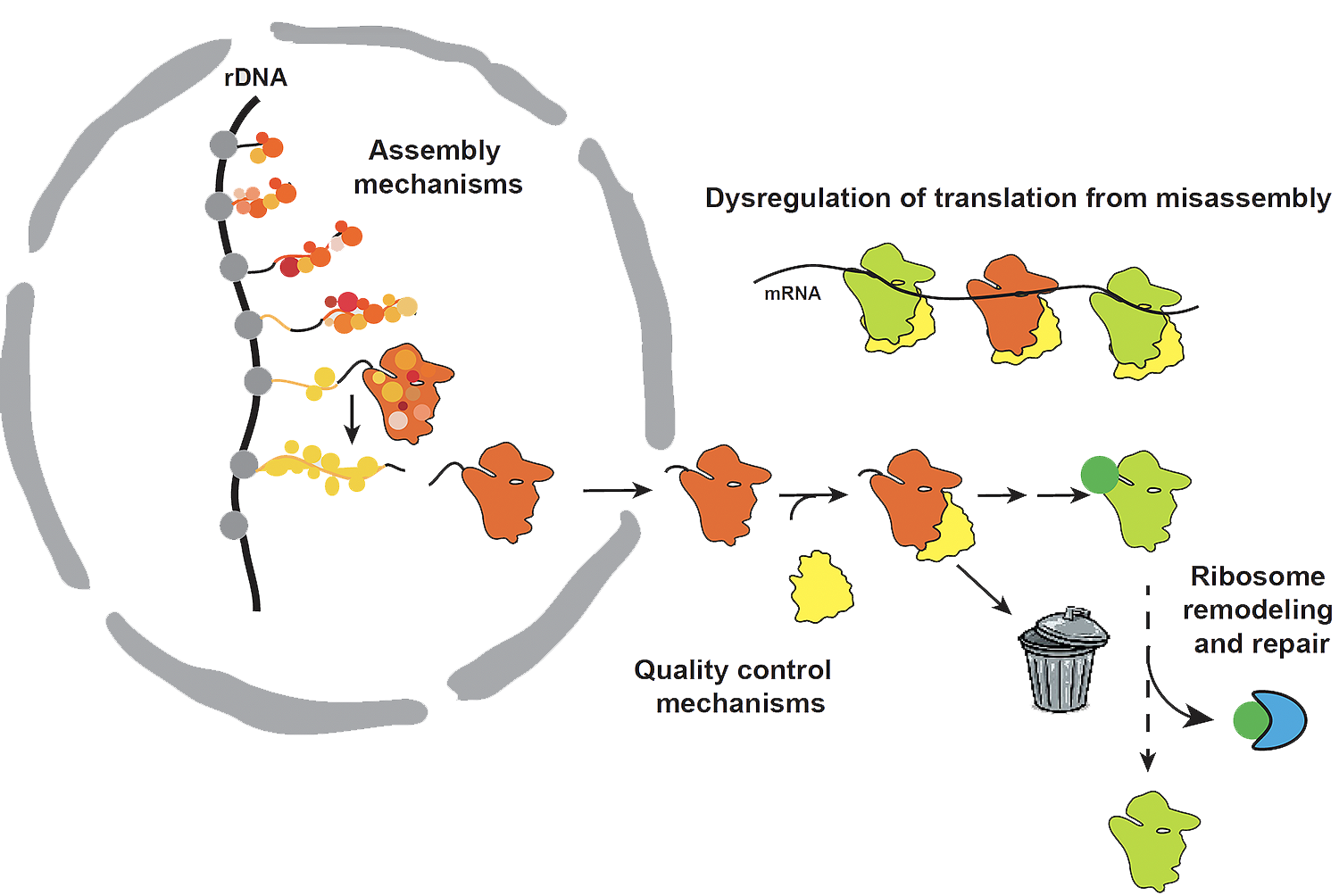
Ribosome Assembly, Quality Control, Repair and the Molecular Basis for Ribosome-Associated Diseases (Ribosomopathies)
Ribosomes are the largest, most abundant and most conserved RNA-protein complexes, catalyzing protein synthesis in all cells. In doing so, they must interpret the information contained in the mRNA to produce the right amount of the correct protein. In addition, (collided) ribosomes, which form a unique interface, are also central to the maintenance of mRNA quality control. Thus, misassembled ribosomes can affect the sequence and abundance of proteins and mRNAs, thereby globally disrupting protein homeostasis. As a result, a number of diseases arise from defects in ribosome assembly.
Ribosome assembly involves the coordinated transcription, modification and processing of ribosomal RNA (rRNA), integrated with the binding of ribosomal proteins (RPs), and the subsequent folding of the rRNA. In eukaryotes, this process involves a machinery of over 200 assembly factors (AFs), and is initiated co-transcriptionally in the nucleolus, resulting in the formation of assembly intermediates that are partially matured and contain most RPs. These intermediates are exported into the cytoplasm, where final maturation takes place. Importantly, these last maturation events are integrated with quality control steps, thereby ensuring only fully and correctly assembled ribosomes enter the translating pool.
A number of diseases result from the escape of misassembled ribosomes into the translating pool. These can arise either from point mutations in AFs, or from RP haploinsufficiency, which leads to reduced ribosome concentrations, as well as the accumulation of ribosomes lacking the insufficient (and sometimes adjacent) proteins. These diseases share a predisposition to specific cancers. Furthermore, ribosomes from cancer cells lose the stoichiometry of their component proteins, which is associated with a poor prognosis, and normally suppressed by p53. Together, these data demonstrate the importance of (i) ensuring that all RPs are correctly incorporated into ribosomes, and of (ii) quality control mechanisms to identify and ultimately remove incompletely or incorrectly assembled intermediates. Furthermore, these diseases also motivate (iii) a better understanding of how misassembled ribosomes and dysregulated ribosome numbers lead to cancer. (iv) Finally, we recently discovered that non-functional ribosomes are identified by the collisions they incur, and then degraded, while oxidatively damaged ribosomes can be repaired. How these scenarios are differentiated and how and where degradation or decay happens remains to be studied. We study these key questions in a combination of biochemical, genetic, and genomic experiments, taking advantage of the yeast system, and moving into human cells if necessary. We also study how these processes affect cancer development and aging.